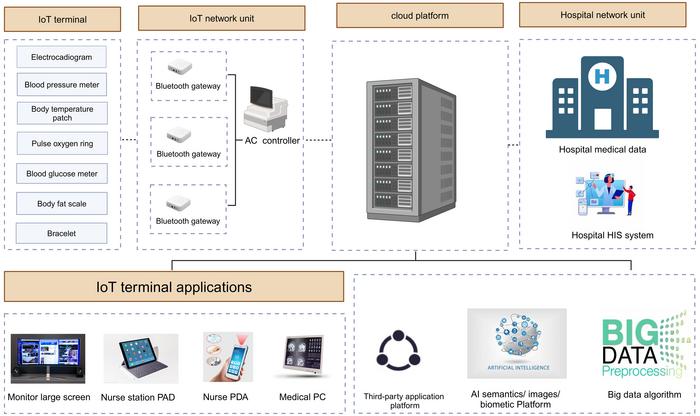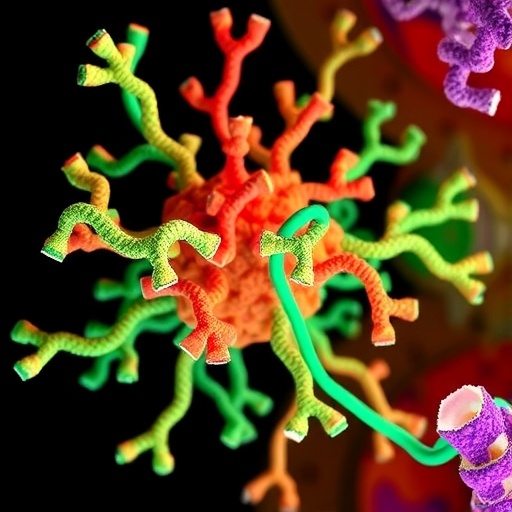In the dynamic landscape of perioperative care, an innovative convergence is emerging between Traditional Chinese Medicine (TCM) and cutting-edge digital technology, promising to revolutionize postoperative recovery protocols. The integration of TCM’s holistic principles with advanced artificial intelligence (AI), wearable health devices, and complexity science is creating a new paradigm that transcends the conventional boundaries of medical practice. This evolving approach harnesses the conceptual frameworks of biological holography and chaos-fractal theory, offering a scientifically robust foundation to enhance patient outcomes during the critical perioperative period.
Postoperative recovery has long been a complex and challenging phase in surgical care, characterized by the imperative to minimize complications and accelerate functional restoration. While Enhanced Recovery After Surgery (ERAS) protocols have notably improved patient trajectories through multimodal analgesia and early mobilization, persistent obstacles like gastrointestinal dysregulation and systemic stress imbalances remain. Against this backdrop, TCM’s ancient wisdom, grounded in the circulation and balance of Qi and blood, reemerges through a modern lens, empowered by digital tools that enable precise monitoring and individualized interventions tailored to the unique physiological rhythms of each patient.
At the heart of this novel integration lies the principle of biological holography, a concept articulated by Professor Yingqing Zhang. Biological holography posits that each constituent part of a living organism encapsulates a reflection of the whole system, embodying a fractal-like interconnectedness integral to bodily function. This theoretical foundation aligns seamlessly with TCM’s “holistic thinking” and “syndrome differentiation,” which have traditionally relied on localized diagnostic signs such as pulse quality and tongue appearance. By digitizing these diagnostic modalities, the platform transcends qualitative assessments, translating localized clinical indicators into comprehensive health metrics indicative of systemic homeostasis.
Complementing this holographic framework is chaos-fractal theory, a cornerstone of complexity science that explicates the nonlinearity and self-similarity inherent in dynamic biological systems. The perpetual oscillations of Yin and Yang within the human body epitomize chaotic balance—small physiological perturbations can precipitate magnified cascading effects, influencing overall health outcomes. By applying fractal analysis and chaos theory to physiological signals like heart rate variability (HRV), clinicians can unravel complex recovery trajectories, constructing predictive models that anticipate postoperative shifts and guide adaptive management strategies optimized for each patient’s dynamic status.
The practical embodiment of these theories manifests in the development of a perioperative digital TCM platform. This platform synergizes AI algorithms, wearable sensors, and real-time data analytics to conduct continuous and multidimensional monitoring of patients’ internal states throughout the surgical journey. The objective is precise: to maintain systemic homeostasis by detecting and correcting even minimal instabilities promptly. Through mobile healthcare devices capable of capturing nuanced physiological data, AI-driven analytics interpret multispectral inputs, facilitating a nuanced, bidirectional integration of TCM and Western medical approaches that elevates postoperative care beyond conventional methods.
From a theoretical perspective, the platform’s architecture is meticulously designed to model the perioperative physiological system as a nonlinear, complex entity influenced by multiple interacting factors including surgical trauma, anesthesia effects, and individual variability. Utilizing biological holography principles, it maps diagnostic signs gathered from portable diagnostic devices—such as tongue imaging systems and pulse wave acquisition apparatuses—to aggregate insights into the patient’s global health status. This mapping enables ongoing prediction of recovery outcomes and timely interventions tailored to emerging physiological patterns.
The platform’s methodology fundamentally reimagines the four pillars of TCM diagnosis: inspection, auscultation and olfaction, inquiry, and palpation. By digitizing and standardizing these traditionally experience-based techniques, the platform leverages AI and bioinformatics to analyze expansive datasets, extracting diagnostic signatures with unprecedented accuracy and consistency. This transition from subjective clinical experience to objective, data-driven decision-making empowers clinicians to implement preemptive measures that prevent disease progression, avert complications, and reduce the risk of recurrence during the vulnerable perioperative window.
A particularly challenging aspect of integrating TCM and digital technology lies in quantifying the elusive balance of Yin and Yang, a dynamic that governs health and disease in TCM philosophy. The platform addresses this by harnessing HRV analytics to objectively assess autonomic nervous system functions, providing real-time metrics that reflect the sympathetic-parasympathetic equilibrium. This quantification delivers clarity to a traditionally ambiguous domain, enabling clinicians to visualize perioperative fluctuations in Yin-Yang balance with scientific precision and adjust therapeutic strategies accordingly.
Ultimately, the digital TCM platform conceived through the fusion of biological holography, chaos-fractal theory, and AI-driven tools embodies a new frontier in integrative medicine. Its data-centric, personalized approach promises to enhance the precision of postoperative care, augment the efficacy of ERAS protocols, and bridge the epistemological divides between Eastern and Western medical traditions. As this technology matures, it holds the potential to transform perioperative recovery into a more predictable, optimized, and patient-centered process that harnesses both ancient wisdom and modern innovation.
Looking ahead, the continuing evolution of digital TCM platforms is likely to catalyze broader acceptance and integration of traditional medicine within mainstream healthcare. Innovations in sensor technology, machine learning, and systems biology will further refine the diagnostic and therapeutic capabilities of these platforms. Consequently, this convergence will not only improve postoperative outcomes but also pave the way for a more holistic understanding of health that embraces complexity, interconnectedness, and individualized care at its core.
Such advancements herald a future wherein postoperative recovery is no longer a reactive, generalized process but a proactive, finely tuned journey meticulously guided by real-time data and nuanced understanding of biological complexity. The ongoing research and development in this domain exemplify the potential of interdisciplinary approaches to medicine, reinvigorating traditional concepts through the lens of modern technology and fostering a new era of integrative perioperative care.
Subject of Research: Integration of Traditional Chinese Medicine with digital technologies for enhanced postoperative recovery.
Article Title: Foundation and Practice of Digital Traditional Chinese Medicine Platforms in Enhanced Recovery After Surgery
News Publication Date: 25-Mar-2025
Web References:
https://www.xiahepublishing.com/journal/fim
http://dx.doi.org/10.14218/FIM.2025.00011
Image Credits: Heiying Jin, Xiaochun Zhang
Keywords: Traditional Chinese medicine, Digital data, Scientific publishing
Tags: biological holography in medicinecomplexity science in surgerydigital tools for patient monitoringDigital Traditional Chinese MedicineEnhanced Recovery After Surgery protocolsholistic patient care approachesindividualized interventions in recoveryintegrating AI in healthcareminimizing surgical complicationspostoperative recovery innovationsTCM principles in modern healthcarewearable health technology in TCM





